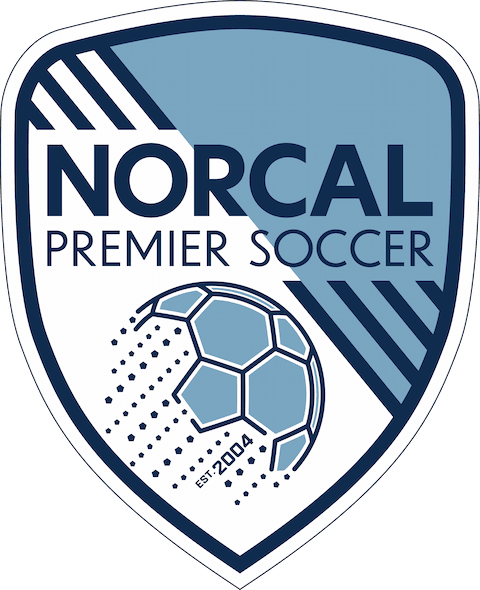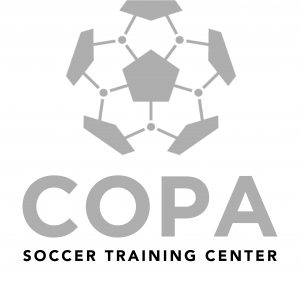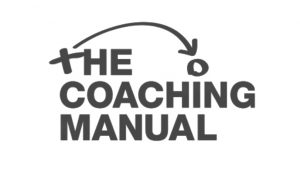Q&A: RAGE and PDP coach Alena Thom

Note: NorCal Premier Soccer regularly sits down with an influential figure in the youth soccer landscape to pick their brain about a variety of different topics that are relevant in the current soccer environment in the United States. For this edition we spoke with Pleasanton RAGE and PDP coach Alena Thom. A former professional player and collegiate star at Wake Forest, Thom moved into coaching upon retirement where she has found success in Northern California at a variety of different clubs. The Missouri native has been part of NorCal’s Player Development Program trips to the Gothia Cup in Sweden the last three times NorCal has sent a team.
NorCal: How did you fall in love with soccer?
Thom: I was really into anything active as a kid. I’m the youngest of two, but if my sister could do something, then I thought I could do it too. She tried soccer for a season and hated it. She’s more of the theatrical, ballerina type and I’m definitely the sports one in the family. But because she played, I got into it and it just took, I loved it. From that point on, there was no looking back. I guess it was just a result of my parents putting us in different activities to see what we really liked.
NorCal: What was the youth soccer scene like for you growing up in Missouri?
Thom: Jefferson City wasn’t the greatest soccer town at the time. Since then, thanks to a dedicated few, it’s gotten stronger, but powerhouses like St. Louis, which is about two hours away, and Kansas City, which is closer to three hours away…that’s kind of where your soccer was at. That being said, the coaches I had at a younger age helped instill my love and passion for the game and really supported me. Looking back as a coach, I see how important that was. I started out playing YMCA rec and then played for a boys team starting in second grade, which I did throughout grade school. In middle school, they didn’t want girls playing with boys so they kind of kicked me out for just that reason — they thought that the boys should be playing with boys and the girls should be playing with girls. So I joined the local girls team and was scouted through an ODP program to play on a team in St. Louis. The coach who recruited me didn’t have a spot on his team at the time, so he made a deal with another St. Louis team that I would play with them for a season before joining his team. I think I started playing in St. Louis for a competitive team around 7th grade.
stronger, but powerhouses like St. Louis, which is about two hours away, and Kansas City, which is closer to three hours away…that’s kind of where your soccer was at. That being said, the coaches I had at a younger age helped instill my love and passion for the game and really supported me. Looking back as a coach, I see how important that was. I started out playing YMCA rec and then played for a boys team starting in second grade, which I did throughout grade school. In middle school, they didn’t want girls playing with boys so they kind of kicked me out for just that reason — they thought that the boys should be playing with boys and the girls should be playing with girls. So I joined the local girls team and was scouted through an ODP program to play on a team in St. Louis. The coach who recruited me didn’t have a spot on his team at the time, so he made a deal with another St. Louis team that I would play with them for a season before joining his team. I think I started playing in St. Louis for a competitive team around 7th grade.
NorCal: So you were driving two hours each way to practice?
Thom: I didn’t go every day for practice just because my parents couldn’t make that big of a commitment. A lot of the games were on the weekends, but we did have some weeknight games. On those nights, they’d pick me up from school, I’d do my homework on the way there and back, if I could stay awake. I’d go to practices when I could during the school year but did a lot of training on my own or with local teams. During the summer I would stay with some of my teammates for a week at a time while we were training for a big event like regionals or nationals. It was a huge commitment on my parents’ part. I’m super thankful for their willingness to sacrifice a ton of their time to help me realize and reach my goals and dreams. I cannot thank them enough.
NorCal: What was your time at Wake Forest Like?
Thom: It was fantastic, I always knew that I wanted to play in the ACC. The possession style of play fit me and I knew that I would be pushed to continue to develop. I was fortunate to play under Tony DaLuz and a fantastic staff of coaches. Being there, every time you were in conference, it was a battle. UNC, Duke, Florida State, everyone, there were no “easy” games. We were playing high-level competition, with and against really good players. Wake is actually a small school of about 4,000 undergrads at the time. So your teachers know you and are invested in your education. Along with school, soccer is your job, day-in and day-out. Weights, mandatory study hours, on field training, scouting reports, video analysis, getting treatment, travel to away games, team meals. Time management becomes extremely important but you get it done. One of the best parts is that you become part of a lifelong family who is there for you and with you through it all. It was a fantastic experience for sure and I can’t imagine going to college without having also played.
NorCal: After college, you pursued a career as a professional. What path did you take and how did it end up?
Thom: My plan was to try to play in the WUSA. I graduated college in 2004 and so my collegiate playing career was done in 2003, that fall. It just so happened that was the time when WUSA folded, so I kind of said, “now what?” It was a total bummer because I didn’t feel it was right that my collegiate playing career coming to an end should end my soccer career. I wasn’t ready. I had the passion and desire to play and felt like I still was improving, but I didn’t know of a viable option to continue. The summer after my senior year I played for a WPSL team in Greensboro, which was where I met a German au pair who told me that I should try to play in Germany. I didn’t know anything about the German league, but she sent me a website for the Frauen-Bundesliga that had all the teams and all their addresses. So I became my own agent. I started emailing every team and every coach, asking if they needed an American player. I remember being back at home in Missouri after that summer and I’d be calling German managers and coaches at 2 in the morning in my parent’s basement so I wouldn’t wake them. I had pre-translated a couple sentences introducing myself and getting through the basics, but once that ran out, I quickly realized that I couldn’t really speak German. So follow up questions were pretty awkward for sure… I did get some interest and ended up recruiting a distant German relative to help me with communication. A lot of the clubs were willing to see me play and have me trial, but I had to get out there on my own. My dad and I flew out there in October with the idea that I would stay once I found a team. I guess I was confident that I would find something. I did three trials and found a team that I wanted to play for but then ran into the issue that the transfer window wasn’t until the end of December — I didn’t even know what a transfer window was, I mean, I was clueless. So I ended up changing my ticket and flying back home to train and hoped that they still wanted me come January. I flew out in January, this time on the club’s dime, and played the back end of the season with SC Freiburg. I renewed my contract for one more season. The club was getting a new coach and I wanted the full experience with the team starting with preseason. It took me a while to get comfortable and confident and feel like the player and person I knew I was. I was living with Germans, my coach and teammates mostly spoke German to me with a couple of them translating half time talks and training activities so I wouldn’t mess up drills. I was enrolled in language school, which was one of the ways I got a VISA to play there, so I’d go to hours of language school every day. After playing only half of a season, I didn’t feel like my job there was done and I really wanted to come back and own it a little bit more. That final season really helped me come into my own as part of the team. When the season came to an end, I was also ready to be back in the States. I decided it was time to retire from professional soccer and came home and jumped onto a WPSL summer league team in St. Louis. From there I worked at the University of Northern Colorado for a season as one of the assistant coaches. Through that experience, I realized that I wasn’t 100% ready to only coach because I still wanted to be playing. Randomly, I got a call from this agent in Sweden and I thought it was one of my friends pranking me because he just called me up out of the blue about this team in Sweden and said that someone gave him my number. At this time, there were talks of a new US women’s pro league starting up, so my interest peaked as this could be a good way to get back into it after some time off. After my coaching commitment ended, I headed to St. Louis for a summer to prep and then was off to Sweden. It was a 7 month season and a very different experience than Germany, much easier to adapt to culturally, because everyone spoke English and it felt more like home. I also played with other Americans and actually a Wake Forest player who was a freshman when I was a senior. A few games left in the season, I broke my ankle and tore pretty much all of the ligaments. Sweden was meant to be my prep for trying out for the new women’s pro league, WPS, which was months away. I rehabbed like crazy and spent a lot of time getting better at swimming. I was only about 3 weeks into full land training when I started going to combines. I was invited into preseason camp with St. Louis Athletica and was there 10 days before being released. I moved to Boston to play on the Breaker’s reserve team and then found myself back at Wake Forest where I was fortunate enough to help coach as well as continue to train. That next spring I was invited to New Jersey’s preseason camp but ultimately didn’t make the team and Buffalo Flash was my next adventure. We were a solid professional team playing in the W-League and won the National Championship that year. I came home and started working as an exercise specialist at a medical fitness facility weighing my options. A teammate from Buffalo put my name in the hat for one of the two newly formed California professional teams: Orange County Waves and Bay Area Breeze. I flew out to Orange county for a week of tryouts and ended up being placed on the Bay Area team. After that first Breeze season, I went to Sweden one more time just to help a team in the back end of the season so that they wouldn’t get relegated.
NorCal: Interesting, what club was that?
Thom: Eskilstuna United. They are currently in Damallsvenskan, which is the top league. At the time, they were in Norretan, which is one below the top division, but they needed to stay there to avoid relegation, keep their funding and have another chance at the top division. So they brought me in as a defender and another American who was a pretty good goalscorer. It was a young team and we both had quite a bit of experience — it was a good team with a lot of talent, they just needed a little help. It was kind of fun, you know, because this type of a move doesn’t always work, but it worked. We stayed up!
NorCal: So after that, you got into coaching?
Thom: I played for the Breeze for another year, did a European tour with them and then started focusing more on coaching. I was still playing WPSL/W-League, but no longer getting paid. At the time I was working with a friend and we had a soccer training business. Not really knowing the landscape of the youth game here, we were just going around to clubs and asking if they were interested in us running camps for their players. That’s how I ended up working in Dublin, through that. I spoke to (NorCal Club Development Coordinator) Nick Lusson, who brought us in with his rec program to run training sessions for them. I needed a job and it seemed like a good opportunity, so that’s how I got into it. That fall, I took two teams with Dublin. I feel very fortunate for the timing of it all, to have had the opportunity to work with and learn from Nick and Jovan Yamagishi, who was also there coaching there at the time. That experience helped lay the groundwork for my future as a coach in Norcal.
NorCal: Before I really get into coaching, I want to go back to the state of women’s professional soccer in the United States and all the leagues that have been here in the past. Does the NWSL feel different to you and if so, why?
Thom: Yeah, the model is very different and proven itself as the longest professional women’s league in the USA. WUSA and WPS only lasted about 3 seasons each. They both overspent and didn’t have a model that could sustain a league year in and year out. NWSL is different in the fact that three national federations fund their national team players’ salaries for the teams. They are working to build gradually and have even recently expanded and increased salaries. Although some are still pretty low, it provides a platform for the players to not have to go abroad just to continue to play. To be forced abroad as your only option can be exhausting and to have to do that season after season can be really hard — for the players to be able to live in their home country and play at a high level is a massive achievement. Players also have the option to supplement their salaries with a side job. I’m not saying this is ideal, but it’s the current reality for a lot of players. When you’re abroad your VISA often only allows you to work as a professional player or for the club, so you can’t always get a second job if you’d like to earn more. I’m looking forward to seeing how the women’s game keeps growing everywhere at the professional level.
NorCal: On a large scale, there aren’t a ton of female coaches in the youth game, which is something that you work on changing with the NorCal Women’s Committee. How do we get more women like you involved in coaching?
Thom: It’s a tough question because just like any job, the traits of the job draw different types of people. And even though we have all these women who have played and are passionate about soccer, playing and coaching are very different. The lifestyle of a coach is not always what people want in a career — you’re working a lot of evenings and working a lot of weekends, sometimes with a bit of travel, too. It’s extremely important that people in leadership roles and organizations see the value of supporting women as coaches and provide various pathways, and specific opportunities in an environment that is welcoming to everyone. It’s also important that we show these pathways to younger women and players so that they can be thinking of coaching as a viable career choice from younger ages. With anything, it takes time for change, and there isn’t just one answer.
NorCal: Throughout this last year, players and coaches have had to deal with an unprecedented situation with the COVID-19 pandemic. How have you handled it and what have you been doing with your players to help continue their development despite the circumstances?
Thom: The biggest thing is just focusing on what we have control over. In a sense you’re limited with what you can do in a non-contact and socially distanced environment, but within the situation, you’re still able to work on different principles of play and still able to develop technically and tactically. You’re still able to do things to give back to your community. So from that standpoint it’s business as usual, just in an unusual environment. But we have to keep the big picture and keep working to improve. That being said, everything needs to be as real and game-like as possible and often that means that they have to be very disciplined to put the pressure on themselves. Of course you’re going to be able to sit in that pocket of space when you can’t be defended, but that’s not realistic, so what can you do that would mirror a game? Another big takeaway is recognizing that this is a time where you have the opportunity to work on something that you may not normally have time to focus on. That could range from the mental aspect of the game, technical side or simply having time to watch more soccer. A massive component is that the players are able to see each other and spend time together at training. For some, training may be the only opportunity to see people outside of their family and that connection is so important right now. I know it’s been a lot for the kids, soccer just being one piece of it. And although it’s not soccer like they’re used to, we still can focus on what we can do and what we do have. We’ll get there, and when we do I think we will appreciate the opportunity to be able to play that much more.
NorCal: Anything else you’d like to add?
Thom: In terms of college recruiting, players need to be active in their process. I wasn’t initially recruited to play at Wake Forest. I knew I wanted to play in the ACC but I only had one ACC college recruiting me and it kind of fell through so I ended up reaching out to Wake Forest, sending them video. They contacted my club coach and said that they needed to see me play. So I ended up flying out there and guest playing for a team from Charlotte so that the coaches could watch me play. After they watched me play, they started recruiting me. I think that’s a good story for kids to read because it’s not just like, “sit and wait.” If you know that you want something, you need to sometimes do more than just wait for a call.












